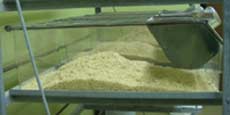Experiment Module: The Effect of an Enriched Environment on Memory
The renowned psychologist Donald Hebb took laboratory rats home and let his children play with them. Subsequently, these rats solved test problems more easily than rats who had remained in their cages in the laboratory.
So what did the rats who went home with Hebb experience that the rats who stayed in the lab did not? Simply put, novelty: a richer physical and social environment than the other rats.
In the 1960s, experiments were conducted to test this paradigm systematically. These experiments showed that living in an environment with more sensory and social stimuli alters the function and structure of the brain. The brains of rats who were raised in groups also weighed more than those of rats who were not. This was a very surprising discovery at the time, when brain weight was considered a stable characteristic not subject to environmental influences. Today we know that this is not the case and that the observed differences came from a thickening of the cerebral cortex, due to greater ramification of the dendrites in the cortical neurons.
Since then, many researchers have shown that placing animals in complex environments for extended periods improves their memory and their learning ability. For example, researchers at Princeton University conducted experiments demonstrating that mice form memories of certain objects (the mice spent more time exploring new objects than objects that they had encountered before, thus proving that they remembered the existence of these objects). Next, the Princeton researchers applied this test to mice who had a mutation in the gene that is responsible for the presence of an NMDA receptor in the hippocampus and that is directly involved in the process of forming memories. These mutant mice, although they behaved normally, had major deficits in learning and memory.
The researchers wanted to see whether living in an enriched environment could compensate for these congenital deficits. The results showed that it did. The mutant mice ended up performing similarly to the normal mice! Some memory deficits associated with disabling predispositions in the brain can therefore be partly or even entirely offset by an increase in environmental and social stimuli.
|
| |


